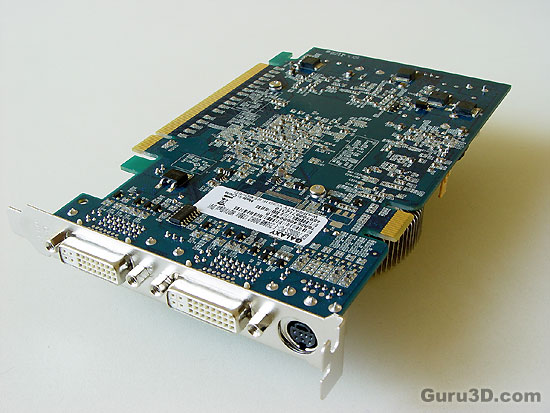Page 18
Overclocking & Tweaking![]()
As most of you with most videocards, we can apply a simple series tricks to boost the overall performance a little. You can do this at two levels, namely tweaking by enabling registry or BIOS hacks, or very simple, tamper with Image Quality. And then there is overclocking, which will give you the best possible results by far.
What do we need?
One of the best tool for overclocking NVIDIA and ATI videocards is our own Rivatuner that you can download here. If you own an ATI or NVIDIA graphics card then the manufacturer actually has very nice built in options for you that can be found in the display driver properties.
Where should we go ?
Overclocking: By increasing the frequency of the videocard's memory and GPU, we can make the videocard increase its calculation clock cycles per second. It sounds hard but it really can be done in less then a few minutes. I always tend to recommend to novice users and beginners not to increase the frequency any higher then 5% of the core and memory clock. Example: If your card runs at 500 MHz (which is pretty common these days) then I suggest you don't increase the frequency any higher than 25 to 50 MHz.
More advanced users push the frequency often way higher. Usually when your 3D graphics start to show artifacts such as white dots ("snow"), you should back down 10-15 MHz and leave it at that.
Usually when you are overclocking too hard, it'll start to show artifacts, empty polygons or it will even freeze. Carefully find that limit and then back down at least 20 MHz from the moment you notice an artifact. Look carefully and observe well. I really wouldn't know why you need to overclock today tested card anyway but we'll show it still ;)All in all... do it at your own risk.
| Reference Clocks |
Default on this card | Maximum overclock | |
| Core Clock Speed 3D | 400 MHz | 500 MHz | 548 MHz |
| Memory Clock Speed | 400 MHz(x2) | 700 MHz (x2) |
The Galaxy GeForce 7600 GS despite it nice default overclock at 500 core clock already; is still a very nice card to clock even higher.
We were able to push the card swiftly towards roughly 550 MHz on the main core clock and we settled the memory at an amazing 817 MHz. The core could probably even a tad faster but I did not want to risk damaging the card. You should apply that same logic. Why taking risk and push too far for a 5% FPS increased framerate?
Results will vary per card, and you might need to back down a little the minute you see artifacts or simply want to play it safe. None the less, tweaking is a simple trick to get some more bang for your buck. Obviously the overclocking matters, look at the chart below:
sidenote: Our overclocking results are never a guarantee for your home grown results. Manufacturers' choices in components differ often per batch and so will the end-result. This however is a good indication of what is (or isn't) possible.

